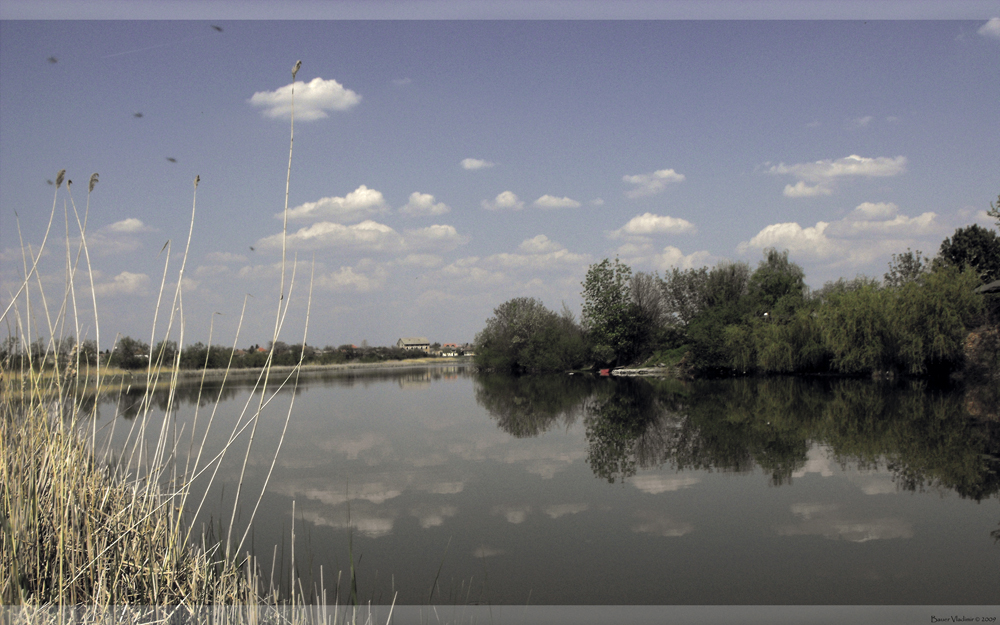|
Bubanj Potok
Bubanj Potok ( sr-cyr, Бубањ Поток) is a non-residential suburban settlement of Belgrade, the capital of Serbia. It is located in Belgrade's municipality of Voždovac. Location Bubanj Potok is located on the highway Belgrade–Niš, in the valley of the same name, a section of the valley of the Bolečica river, where many smaller creeks, some of them intermittent, flow into the Bolečica: ''Bubanj Potok'', ''Zavojnička reka'', ''Vranovac'', ''Kamena voda'', ''Gleđevac'', etc. East of the valley is Leštane, municipality of Grocka, while Beli Potok on the west, mountain Avala on the southwest and Zuce on the south, are in the municipality of Voždovac. The southernmost tip of Zvezdara municipality is just north of it. Characteristics Bubanj Potok is named after the creek of the same name and means "drum creek" in Serbian. It is a non-residential settlement which spawns around the crossroads of the highway and the ''Kružni put'', the major road connecting the set ... [...More Info...] [...Related Items...] OR: [Wikipedia] [Google] [Baidu] |
List Of Belgrade Neighbourhoods And Suburbs
Belgrade, the capital city of Serbia, is divided into seventeen municipalities, of which ten are urban and seven suburban. In this list, each neighbourhood or suburb is categorised by the municipality in which it is situated. Six of these ten urban municipalities are completely within the bounds of Belgrade City Proper, while the remaining four have both urban and suburban parts. The seven suburban municipalities, on the other hand, are completely located within suburban bounds. Municipalities of the City of Belgrade are officially divided into local communities ( Serbian: месна заједница / ''mesna zajednica''). These are arbitrary administrative units which on occasion correspond to the neighbourhoods and suburbs located in a municipality, though usually they don't. Their boundaries often change as the communities merge with each other, split from one another, or change names, so the historical and traditional names of the neighbourhoods survive. In the majority ... [...More Info...] [...Related Items...] OR: [Wikipedia] [Google] [Baidu] |
Zuce
Zuce ( Serbian Cyrillic: Зуце) is a suburban settlement of Belgrade, Serbia. It is located in Belgrade's municipality of Voždovac. Location and geography Zuce is the easternmost settlement in the municipality, located in the low Šumadija region, on the eastern slopes of the Avala mountain in the valley of the Vranovac creek, a tributary to the Bolečica river. Zuce is located south-east of downtown Belgrade, next to both the railway and highway Belgrade-Niš. It generally spreads to the north (in the direction of the neighborhood of Bubanj Potok) and to the south (in the direction of Vrčin). The area is known for several water springs, including the "Točak" (wheel) spring. In June 2008, a geothermal water spring (22 Celsius) was found in the alluvial valley of the Zavojnička river, on the depth of 150 meters. Water is currently being tested by the Geology Institute of Serbia, which initially reported that the water, though not hot, might be used for heating via ... [...More Info...] [...Related Items...] OR: [Wikipedia] [Google] [Baidu] |
Cutting Boards
A cutting board (or chopping board) is a durable board on which to place material for cutting. The kitchen cutting board is commonly used in preparing food; other types exist for cutting raw materials such as leather or plastic. Kitchen cutting boards are often made of wood or plastic and come in various widths and sizes. There are also cutting boards made of glass, steel, or marble, which are easier to clean than wooden or plastic ones such as nylon or corian, but tend to damage knives due to their hardness. Rough cutting edges—such as serrated knives—abrade and damage a cutting surface more rapidly than do smooth cutting implements. Materials A knife edge is a delicate structure and can easily be blunted by a too abrasive surface. Alternatively, it can be chipped if used on a surface that is too hard. A good cutting board material must be soft, easy to clean, and non-abrasive, but not fragile to the point of being destroyed. Hard cutting boards can, however, be used for food ... [...More Info...] [...Related Items...] OR: [Wikipedia] [Google] [Baidu] |
Politika
''Politika'' ( sr-Cyrl, Политика; ''Politics'') is a Serbian daily newspaper, published in Belgrade. Founded in 1904 by Vladislav F. Ribnikar, it is the oldest daily newspaper still in circulation in the Balkans. Publishing and ownership ''Politika'' is published by Politika novine i magazini (PNM), a joint venture between Politika AD and ''East Media Group''. The current director of PNM is Mira Glišić Simić. PNM also publishes: *''Sportski žurnal'' *'' Politikin zabavnik'' *'' Svet kompjutera'' *''Ilustrovana politika'' *''Bazar'' Editorial history *Vladislav F. Ribnikar (1904–1915) *Miomir Milenović i Jovan Tanović (1915–1941) *Živorad Minović (1985–1991) *Aleksandar Prlja (1991–1994) *Boško Jakšić (1994) *Dragan Hadži Antić (1994–2000) *Vojin Partonić (2000–2001) *Milan Mišić (2001–2005) *Ljiljana Smajlović (2005–2008) *Radmilo Kljajić (2008) *Dragan Bujošević (2008–2013) *Ljiljana Smajlović (2013–2016) *Žarko Rakić (2016- ... [...More Info...] [...Related Items...] OR: [Wikipedia] [Google] [Baidu] |
GSP Belgrade
GSP Belgrade ( sr, / ) is a public transit company in the city of Belgrade. As of 2018, it operates with 170 lines and has 1,611 active vehicles. Name The acronym "GSP" stands for ''Gradsko saobraćajno preduzeće'' ( sr-Cyrl, Градско саобраћајно предузеће, lit=City Transport Company). History Its history dates back to 14 October 1892 when the first horse tram line began operating in Belgrade between Slavija and Terazije. It was known under the name ''Beogradska varoška železnica'' ( sr-Cyrl, Београдска варошка железница, lit=Belgrade Town Rail). The first bus line was opened in 1925 and in 1947 the first trolleybuses appeared in Belgrade. 1940–1990 In 1940, the tram traffic took place on 10 lines. Belgrade has disposed of 104 trams, 60 trailers and 87 buses. The following year, in the bombing of Belgrade was destroyed 38 trams, 36 trailers and 10 buses. In 1945, company changed its name to the Department of traffic ligh ... [...More Info...] [...Related Items...] OR: [Wikipedia] [Google] [Baidu] |
Deep Foundation
A deep foundation is a type of foundation that transfers building loads to the earth farther down from the surface than a shallow foundation does to a subsurface layer or a range of depths. A pile or piling is a vertical structural element of a deep foundation, driven or drilled deep into the ground at the building site. There are many reasons that a geotechnical engineer would recommend a deep foundation over a shallow foundation, such as for a skyscraper. Some of the common reasons are very large design loads, a poor soil at shallow depth, or site constraints like property lines. There are different terms used to describe different types of deep foundations including the pile (which is analogous to a pole), the pier (which is analogous to a column), drilled shafts, and caissons. Piles are generally driven into the ground in situ; other deep foundations are typically put in place using excavation and drilling. The naming conventions may vary between engineering discip ... [...More Info...] [...Related Items...] OR: [Wikipedia] [Google] [Baidu] |
IKEA
IKEA (; ) is a Dutch multinational conglomerate based in the Netherlands that designs and sells , kitchen appliances, decoration, home accessories, and various other goods and home services. Started in 1943 by Ingvar Kamprad, IKEA has been the world's largest furniture retailer since 2008. The brand used by the group is derived from an acronym that consists of the founder's initials, and those of Elmtaryd, the family farm where he was born, and the nearby village Agunnaryd (his hometown in Småland, southern Sweden). The group is primarily known for its modernist designs for various types of appliances and furniture, and its interior design work is often associated with simplicity. In addition, the firm is known for its attention to cost control, operational details, and continuous product development that has allowed IKEA to lower its prices by an average of two to three percent. , there are 422 IKEA stores operating in 50 countries and in fiscal year 2018, €38.8 billion ... [...More Info...] [...Related Items...] OR: [Wikipedia] [Google] [Baidu] |
Vreme
''Vreme'' ( Serbian for ''Time'') is a weekly news magazine based in Belgrade, Serbia. History Launch In 1990, dissatisfied with the media climate in SR Serbia, SFR Yugoslavia's largest constituent unit, a group of liberal Serbian intellectuals, including prominent lawyer Srđa Popović, decided to start a weekly newsmagazine. Following a seven-month preparation throughout the year, ''Vreme'' was launched with its first issue coming out on 29 October 1990, little over a month before the 1990 general election in SR Serbia as the entire country of SFR Yugoslavia was transforming its governance from a one-party system under the Yugoslav Communist League (SKJ) to a multi-party one. Most ''Vremes original staff were journalists from ''Politika'' and '' NIN''. It characterizes itself as "a magazine without lies, hatred, or prejudice" and has opposed nationalistic mobilization for the Yugoslav wars.Gordy, Eric D. (1999). ''The Culture of Power in Serbia: Nationalism and the Destructio ... [...More Info...] [...Related Items...] OR: [Wikipedia] [Google] [Baidu] |
Youth Work Action
Youth work actions (Serbo-Croatian: ''Omladinske radne akcije'', often abbreviated to ''ORA'', Slovenian: ''Mladinske delovne akcije'') were organized voluntary labor activities of young people in the Socialist Federal Republic of Yugoslavia. The actions were used to build public infrastructure such as roads, railways, and public buildings, as well as industrial infrastructure. The youth work actions were organized on local, republic, and federal levels by the Young Communist League of Yugoslavia, and participants were organized into youth work brigades, generally named after their town or a local national hero. Important projects built by youth work brigades include the Brčko-Banovići railway, the Šamac-Sarajevo railway, parts of New Belgrade, and parts of the Highway of Brotherhood and Unity, which stretches from northern Slovenia to southern Macedonia. Initial actions were organized during the Second World War World War II or the Second World War, often ... [...More Info...] [...Related Items...] OR: [Wikipedia] [Google] [Baidu] |
1999 NATO Bombing Of Serbia
The North Atlantic Treaty Organization (NATO) carried out an aerial bombing campaign against the Federal Republic of Yugoslavia during the Kosovo War. The air strikes lasted from 24 March 1999 to 10 June 1999. The bombings continued until an agreement was reached that led to the withdrawal of Yugoslav armed forces from Kosovo, and the establishment of the United Nations Interim Administration Mission in Kosovo, a UN peacekeeping mission in Kosovo. The official NATO operation code name was Operation Allied Force whereas the United States called it Operation Noble Anvil; in Yugoslavia the operation was incorrectly called Merciful Angel ( sr, Милосрдни анђео / ''Milosrdni anđeo''), possibly as a result of a misunderstanding or mistranslation.RTS"Порекло имена 'Милосрдни анђео'" ("On the origin of the name 'Merciful Angel'"), 26 March 2009 NATO's intervention was prompted by Yugoslavia's bloodshed and ethnic cleansing of Albanians, which dr ... [...More Info...] [...Related Items...] OR: [Wikipedia] [Google] [Baidu] |
Omoljica
Omoljica () is a village located in the municipality of Pančevo, South Banat District, Vojvodina, Serbia. The village population is 6,309 people (as of 2011 census). Location and geography Location Omoljica is located southeast of city of Pančevo, its municipal seat, on the Pančevo-Banatski Brestovac road, which is in its section through Omoljica called Patrijarha Arsenija Čarnojevića Street. To the northwest are Starčevo, and further in the same direction, Vojlovica and Pančevo. Ivanovo, the Ivanovo Island and the mouth of the Nadela into the Danube are to the southwest. Banatski Brestovac is on the southeast, down the Ponjavica river and the road along it. The administrative village area borders Bavanište on the northeast, but the two villages are not directly connected by the road. Geography The village is situated on the protruded section of the loess terrace, in direction of the Danube's alluvial plain. Omoljica is in the valleys of the Ponjavica and Nad ... [...More Info...] [...Related Items...] OR: [Wikipedia] [Google] [Baidu] |
Vinča
Vinča ( sr-cyr, Винча, ) is a suburban settlement of Belgrade, Serbia. It is part of the municipality of Grocka. Vinča-Belo Brdo, an important archaeological site that gives its name to the Neolithic Vinča culture, is located in the village. Location Vinča is located on the confluence of the Bolečica river into the Danube, on the Danube's right bank, east of Belgrade and west of its own municipal seat of Grocka. It is situated along the stream of ''Makački potok'', which empties into the Bolečica. Population Vinča is statistically classified as a rural settlement (village). Originally it was situated 3 km from the road of ''Smederevski put'', but as the settlement expanded it now stretches from the Danube to the ''Smederevski put'', making urbanistic connections to the surrounding settlements of Ritopek, Boleč, Leštane and Kaluđerica, though making one continuous built-up area with Belgrade itself. Like the surrounding settlements, Vinča is an immigra ... [...More Info...] [...Related Items...] OR: [Wikipedia] [Google] [Baidu] |







